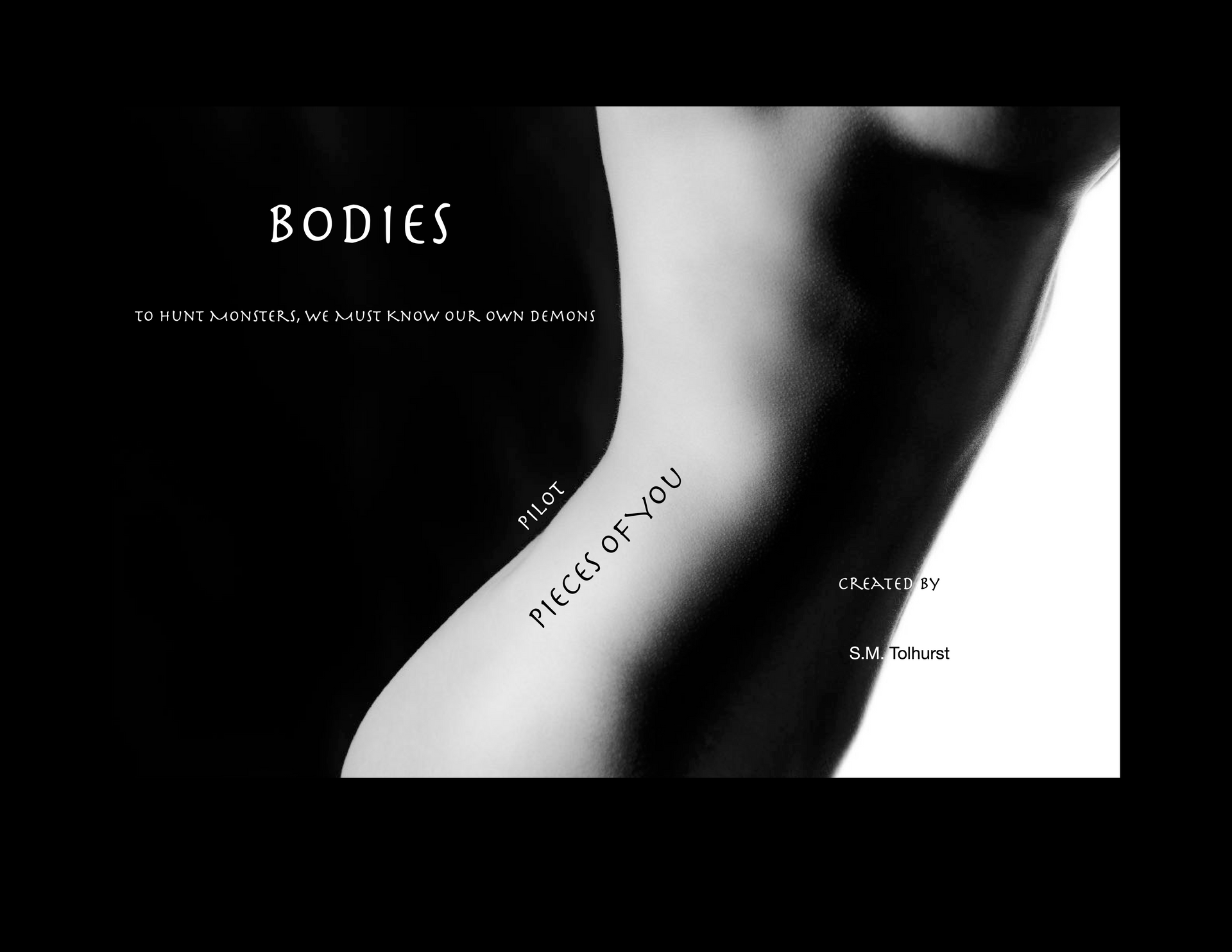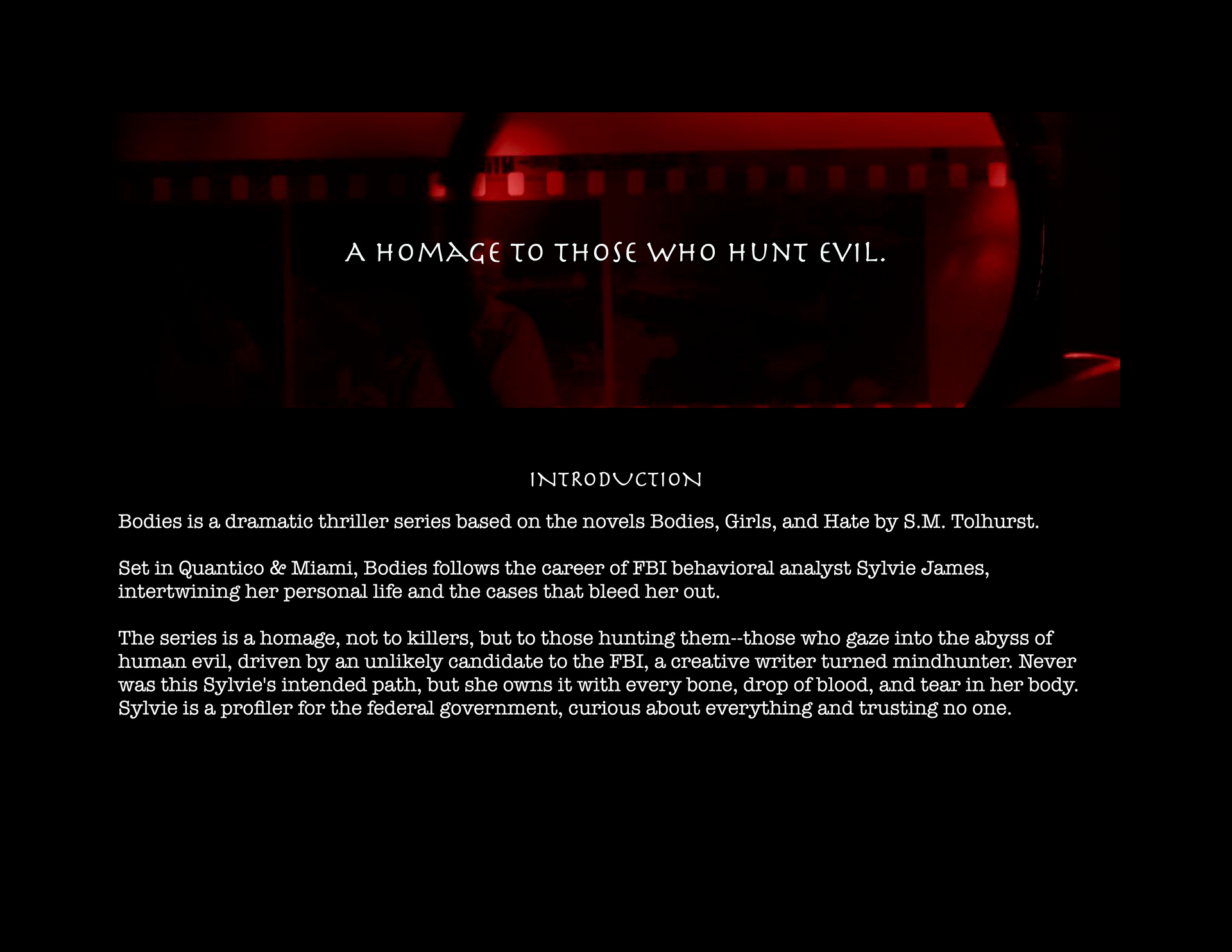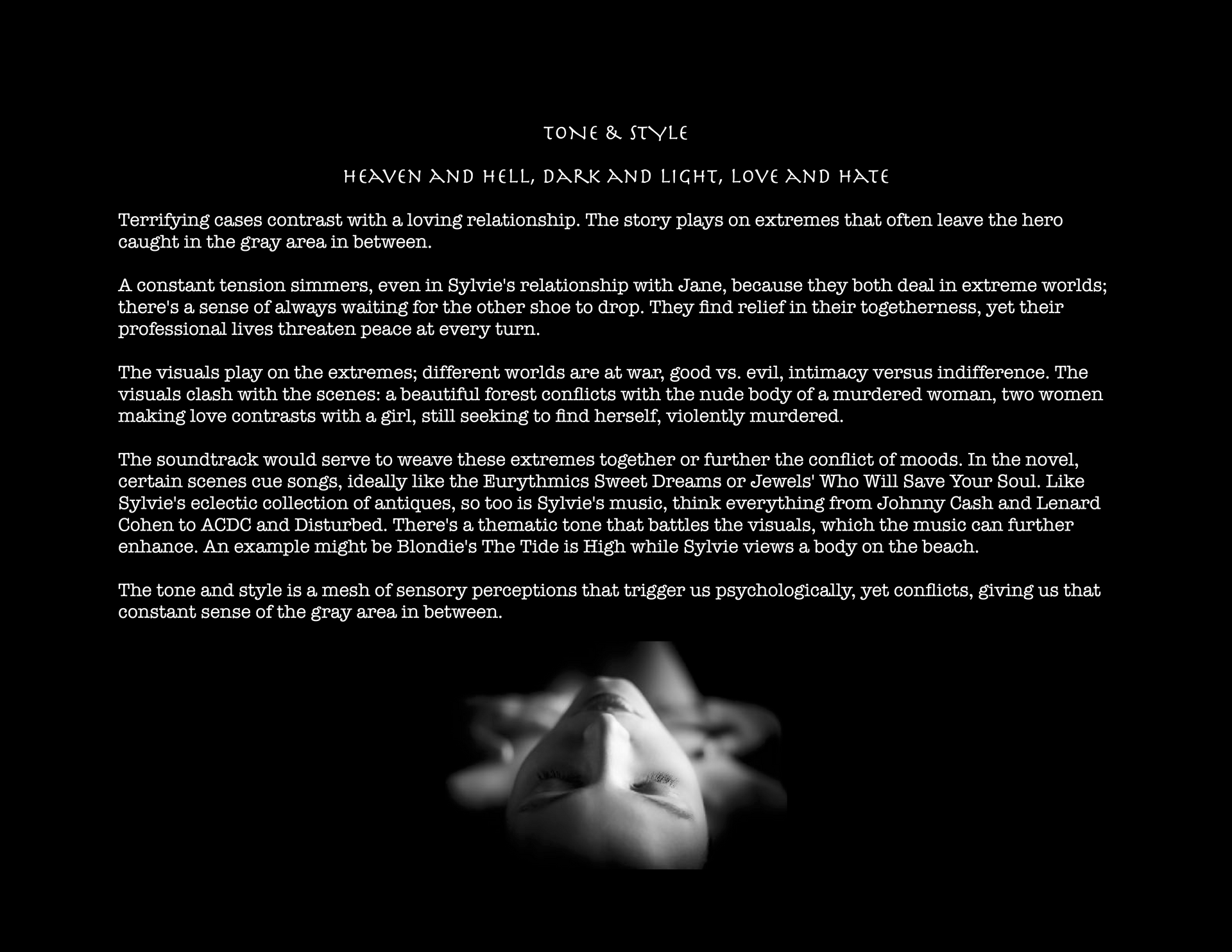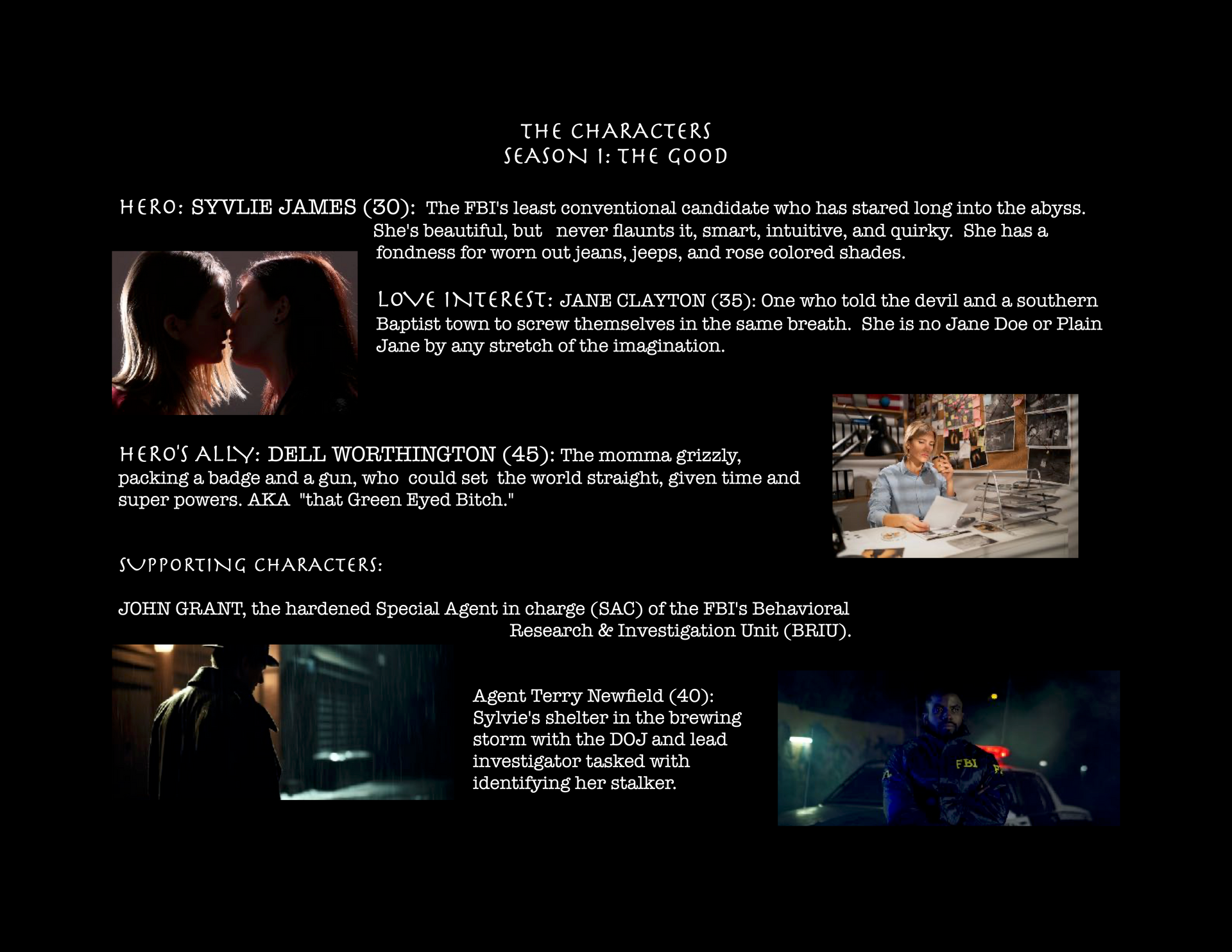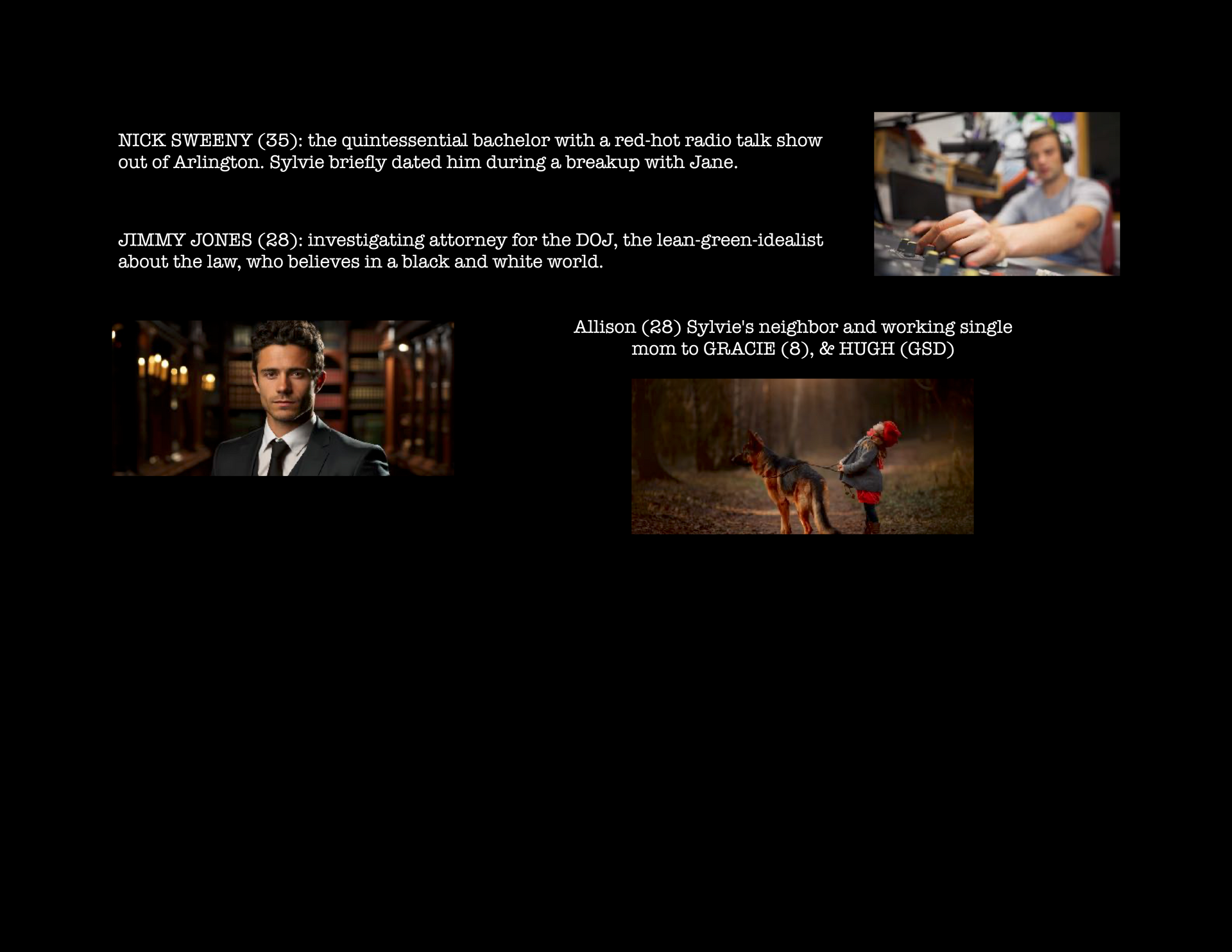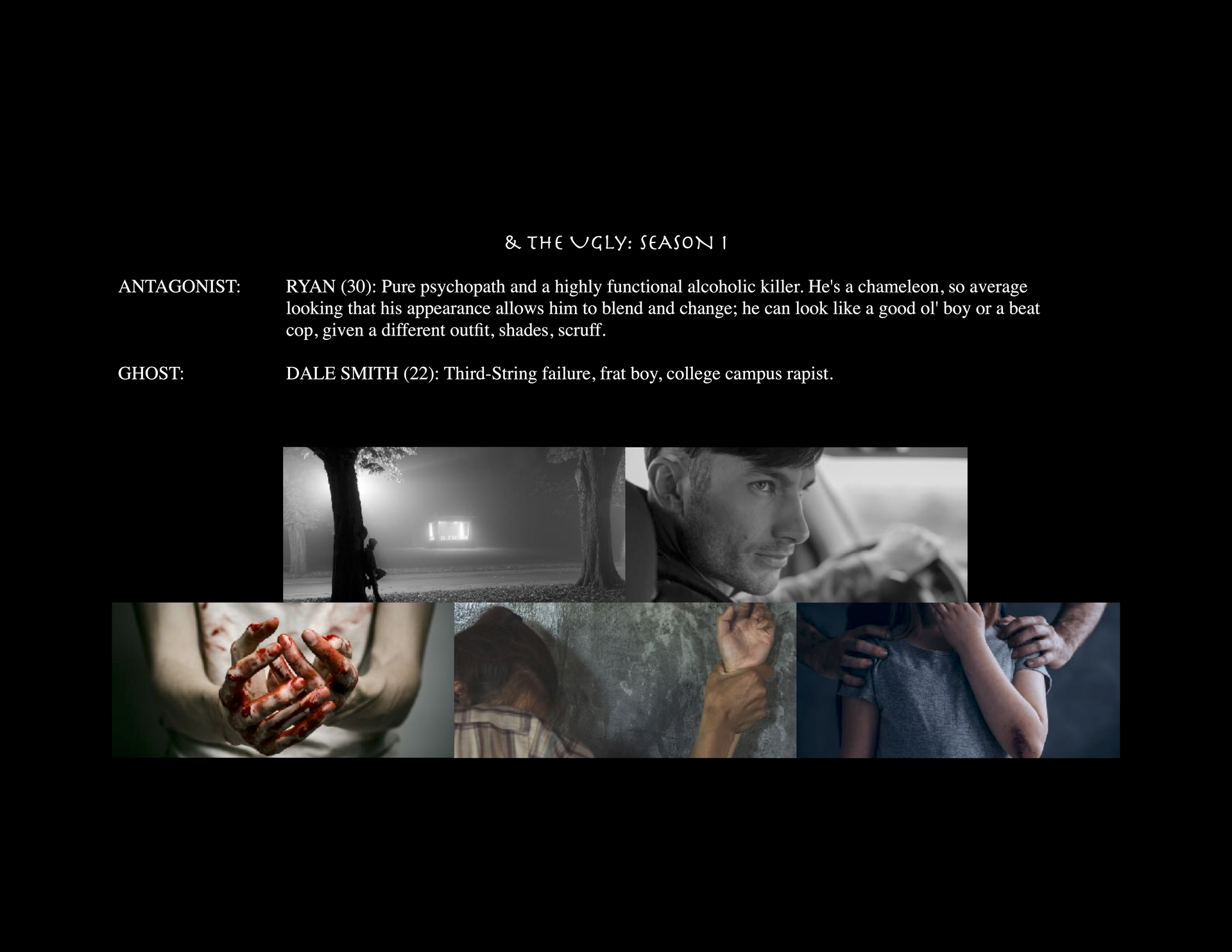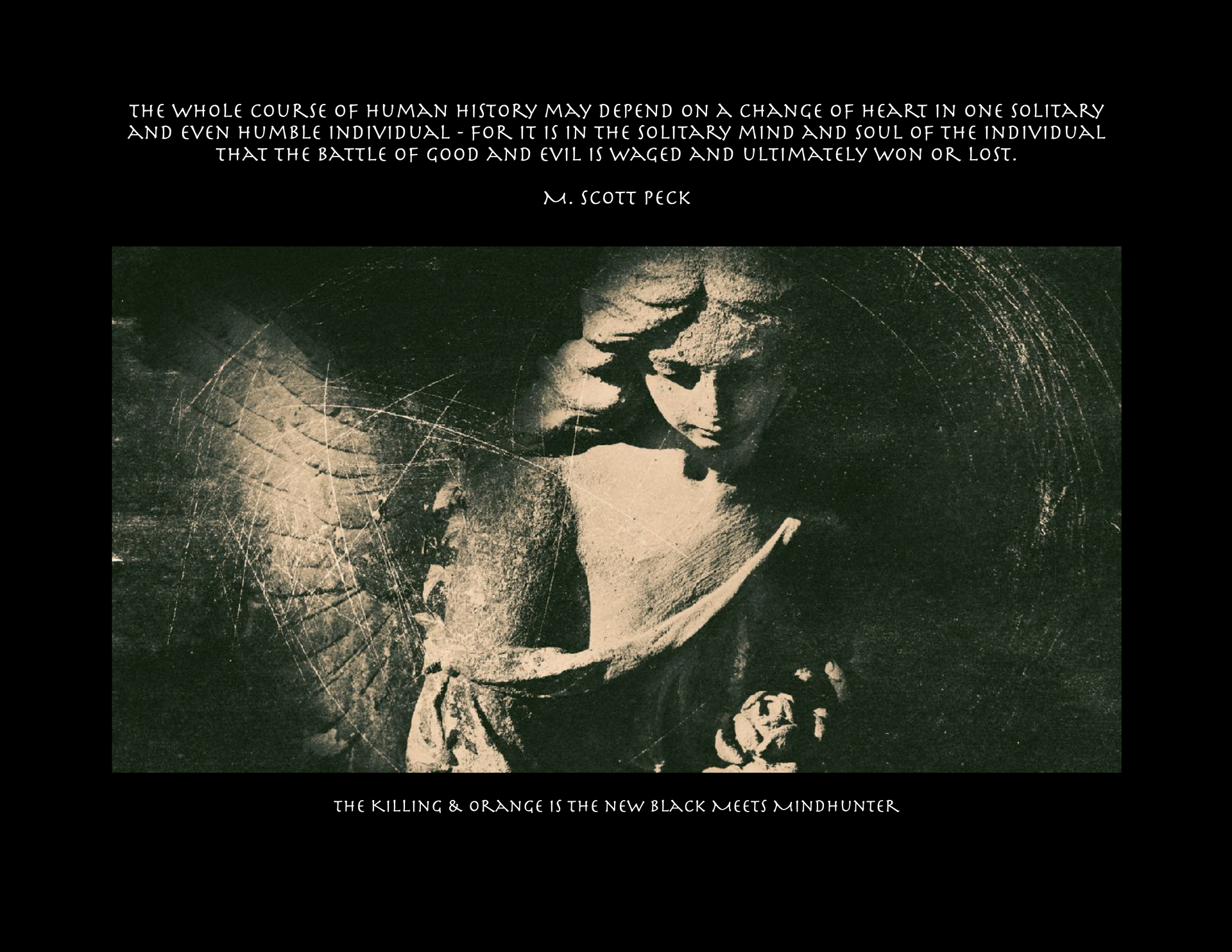Bodies is a literary thriller set in present-day Quantico, Virginia. It follows Agent Sylvie James' two-year stint as a behavioral analyst for the FBI's Behavioral Research and Investigative Unit (BRIU), intertwining her private and professional worlds. It is a homage, not to serial killers, but to those who hunt them. As the Nietzche quote goes: "Beware that, when fighting monsters, you yourself do not become a monster...."
Sylvie is a warrior in the trenches of the mind. A series of events led her down this solitary road, and she has stared long into the abyss. However, in her relationship with Jane, she discovered the gateway to heaven. The conflict between these two worlds never ceases. This is Sylvie's journey through the gray battleground between light and darkness—evil, if you will. Sometimes, evil wins; often, it forces a hunt, and it may appear defeated but always returns. When it glares back, Sylvie can't deny its presence or how it will change her.
Bodies begins with a serial killer revealing that he has stalked Sylvie beyond her time with the FBI. The story takes us back to answer the question of what sets one on the path of pursuing evil—an encounter with evil, the catalyst to a shift in destiny from creative writing to a student of the criminal mind. The book follows Sylvie's prior cases while investigators pursue her stalker—a man who has killed in her wake as she chased monsters and lived her life.
The cases are gruesome, and the relationship with Jane is loving. It's a play on extremes that finds the hero caught in the gray area. The visuals play on the extremes; different worlds are at war: good vs. evil, intimacy versus distance. The visuals clash, a beautiful forest, a child, and a loyal dog, conflicting with the bodies of murdered children. There is also an underlying soundtrack in Sylvie's head; this makes her relatable; she's a real person assigned a horrible task, via choice or destiny. It's a mesh of sensory perceptions—with conflict furthering the gray area between extremes.
In Sylvie's cases, we rarely meet the murderer because this is about the hunter. The evil-doer is left to the readers interpretation given the damage done. That's Sylvie's world—interpretation of the five W's: Who? What? Where? When? & Why? The Why is the disturbing point, inspiring curiosity, and will catch a psychopath in the end.
We've all met a psychopath, or at the minimum a narcissist, and sometimes find traces of their behaviors in ourselves; life is, at the bottom line, a game of survival. This is life and death, and we make choices. Sylvie survived a violent assault, that altered her destiny, changed her character and theme. In that regard, Bodies plays on the roots of storytelling, which is also how Sylvie catches the perpetrators. There's a beginning, middle, and end to every journey.
A single event delivered Sylvie to Charlottesville and meeting Jane, who is the antithesis of plain Jane and Jane Doe. Who is Jane Doe, and why is she lost? Why does plain Jane never just become Jane? Why is rape still an issue? The role of mothers matters; sex matters; it all matters. In the end, who is responsible? Guilty? Who are the monsters? Sometimes, Sylvie wonders if she stared into the abyss too long because the truth is that it is always looking back at her through the world. And, in the end, it all must be confronted.
